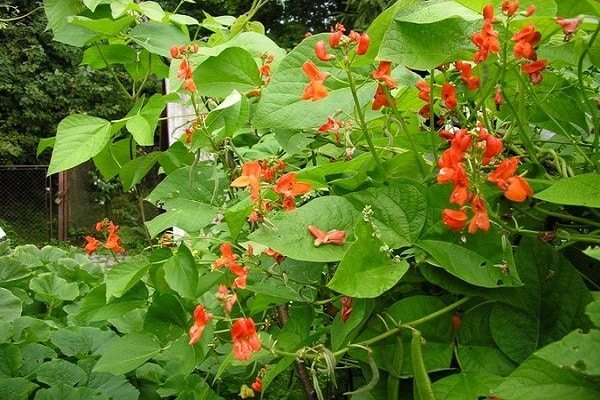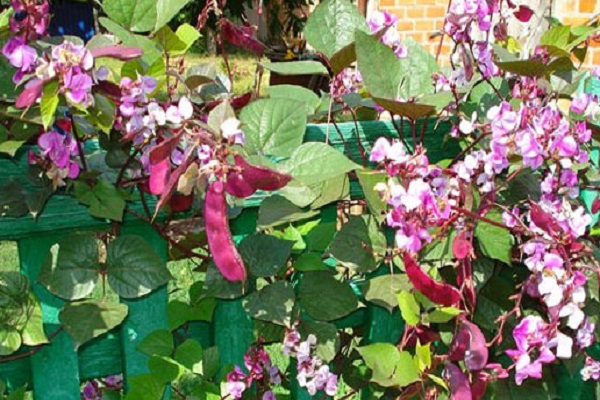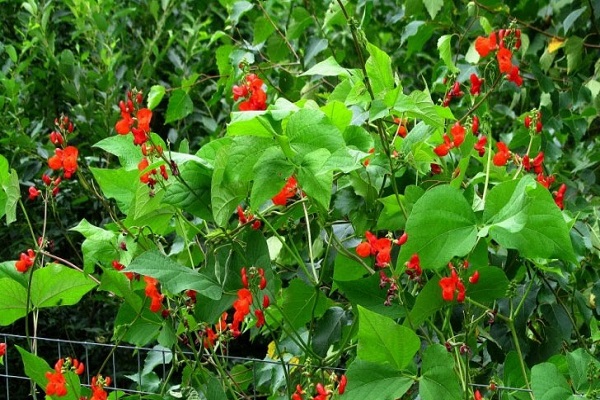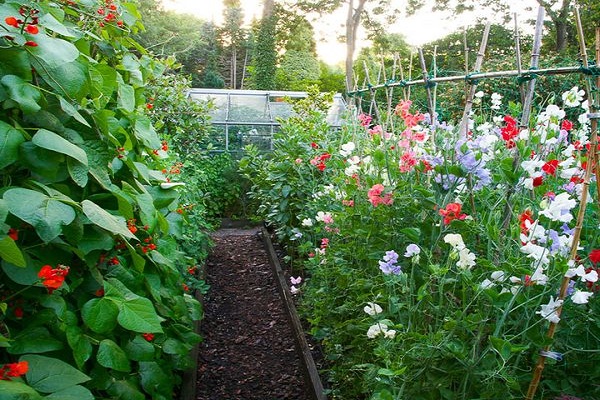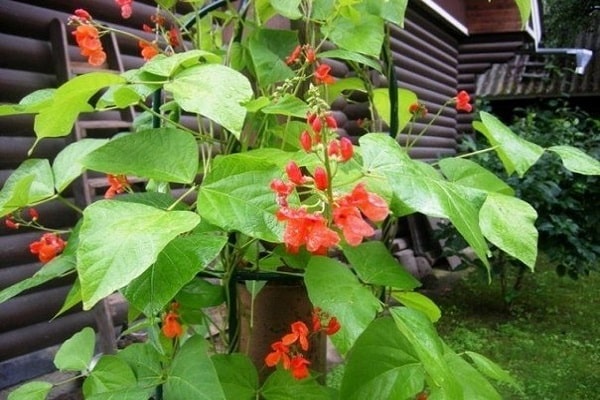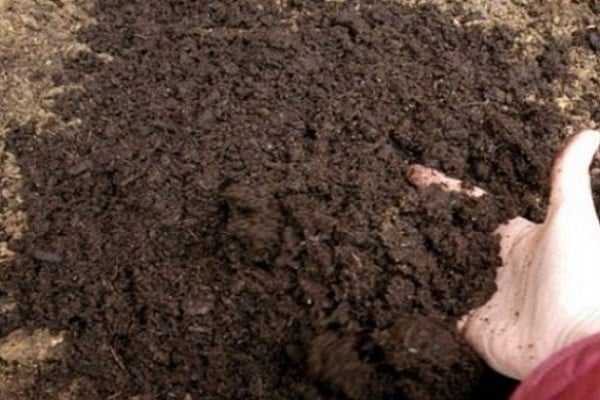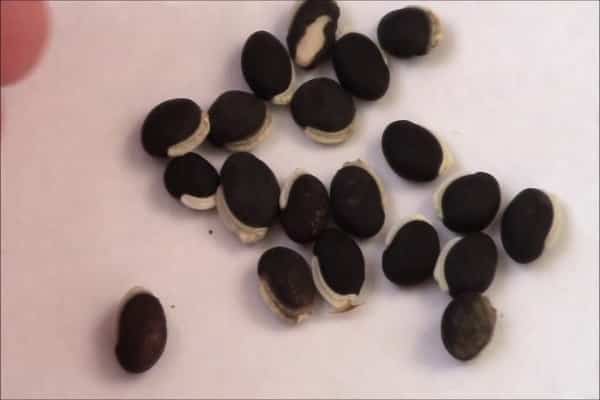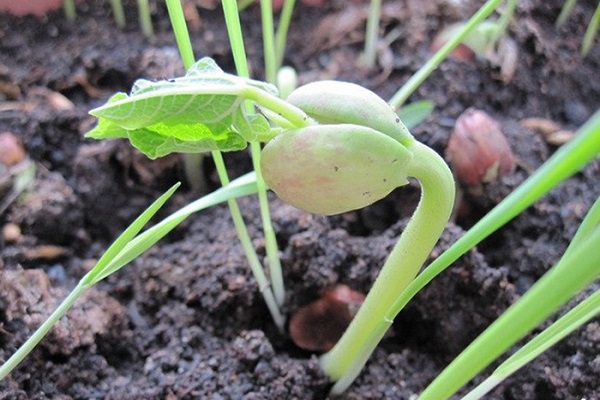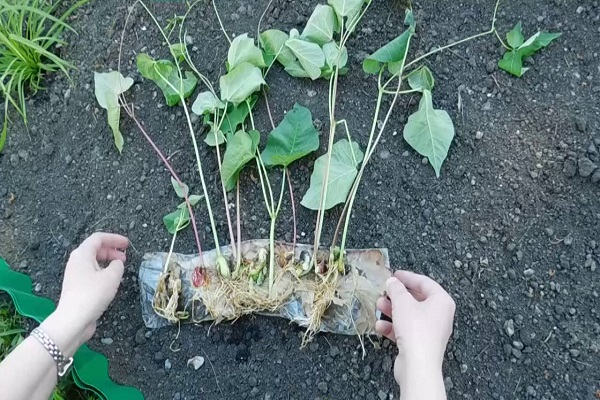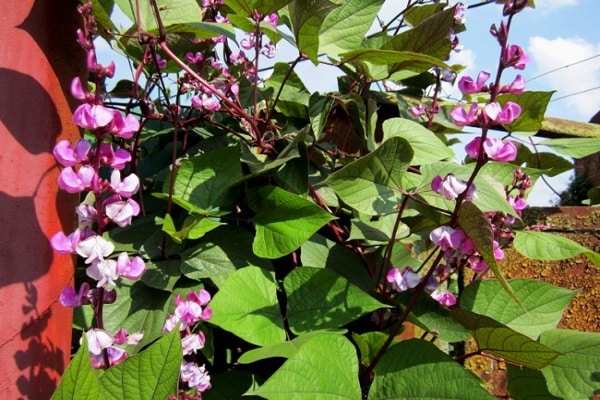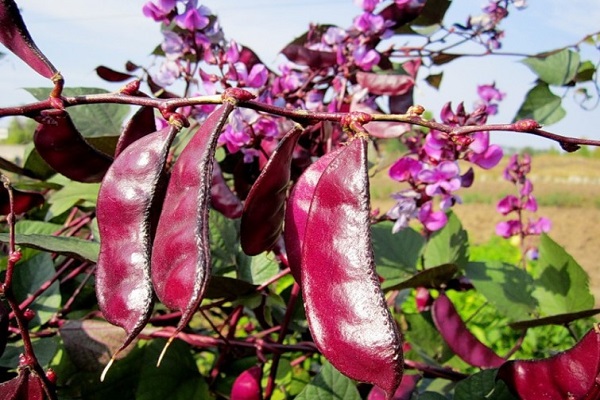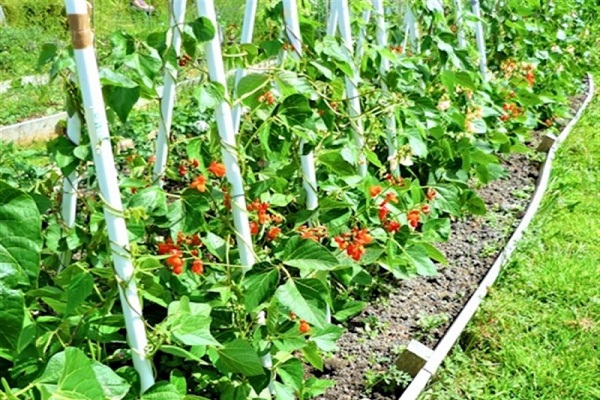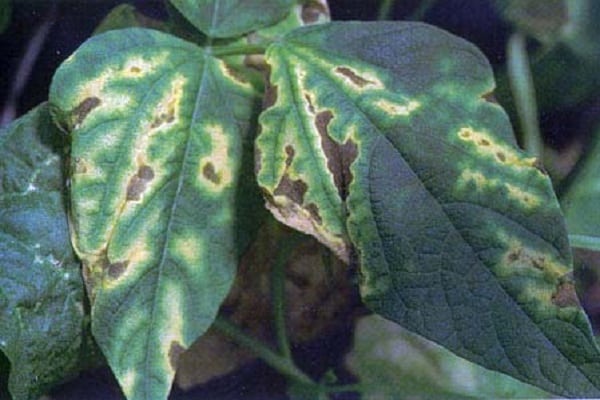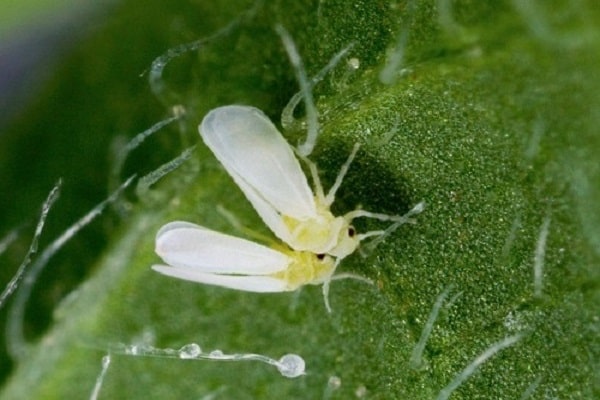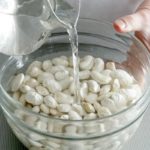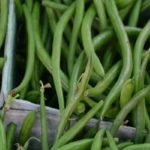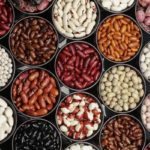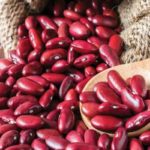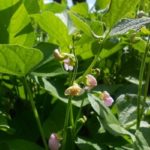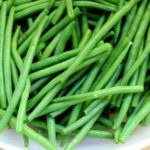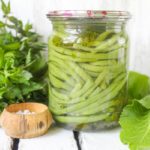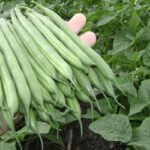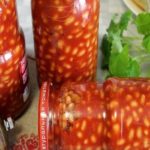Ornamental beans are loved by gardeners for their ease of care and cultivation. Its main purpose is to decorate various structures. By planting a crop on their site, gardeners receive not only a decorative decoration, but also healthy beans, which are famous for their low calorie content.
Characteristics of decorative beans
Growing decorative beans will not bring much trouble.This unpretentious plant easily copes with the role of a decorative element of landscape design. When a culture blooms, it gives an unusual charm to any, even the simplest cottage.
As a rule, culture weaves along the walls. The main thing is to give it a strong support that will not break under the mass of greenery. Decorative beans grow intensively, bushes reach 5 meters.
Another purpose of the crop is to saturate the soil with nitrogen. This element accumulates in the roots of plants. Many gardeners prefer plant beans between the rows of potatoes, thus increasing its yield by 70%. In addition, the plant prevents the development of late blight, and its leaf mass is used as compost and fertilizer.
The fruits of decorative beans are edible, they are rich in vegetable protein, zinc, vitamins A, B, C, E, iron, calcium and other useful microelements. Only purple beans are not used in cooking.
Varieties of decorative beans
If you determine the varieties of decorative beans by taste, then even the most avid gourmets will not be able to taste the difference. The same applies to the size and shape of the fruit. The only difference between the varieties is the color scheme. Climbing beans have many varieties:
- Purple beans. Named after the color of the flowers. Gardeners prefer this crop for its attractive appearance. The variety is used as a decorative ornament; its fruits are inedible.
- Bean variety Golden Nectar. Characterized by an unusual yellow-golden color of the shoulder blades. Suitable for those who love green beans. Unripe pods of this crop are used in cooking.
- Spanish white. It is characterized by large beans, which sets it apart from other shelling varieties.Its fruits are large and cook quickly because they have a thin skin. This variety is great for making borscht, stews, canning and stewing. Only grains are eaten; the pods of this variety are not edible.
- Borlotto beans. Already by the name you can determine that the birthplace of this variety is Spain. Nevertheless, domestic gardeners also fell in love with it. This climbing variety blooms with red flowers and produces flat fruits with a marbled dark red pattern. 4-5 grains are extracted from one pod. As the fruits ripen, a dark pattern appears.
- Green giant bean variety. Among the others varieties of green beans this species is distinguished by its large pods. Their length reaches 22 cm. They have a sweetish, delicate taste and are characterized by the absence of parchment and fibers. Another advantage of the variety is that it bears fruit in stages; gardeners harvest before the first frost.
- Violet grain bean variety. A peeling variety that, under favorable conditions, reaches three meters in length. Ripe grains are characterized by a dark purple color. Characteristically, the pods of this variety also have a soft purple color. Such a culture will become a “landmark” of any site.
- Purple Queen bean variety. Characterized by beautiful purple flowers and beans of the same color. 50 days after the emergence of seedlings, gardeners harvest the first harvest. The grains of the variety are white and characterized by a very delicate taste.
- Climbing Fire Red Beans. Another name is Winner or Turkish beans. This is the most unpretentious variety of legumes. Actively grown as a decoration. Its bright red flowers and vibrant green foliage will breathe life into even the dullest structure. Moreover, the fruits of this crop are also decorative.Their color ranges from white to light purple with black patterns.
- Bluehilda. A variety with purple flowers, pods and even leaves. True, the latter acquire a dark purple hue over time. This is a late-ripening crop; in the middle zone it is grown by seedlings. It blooms for a very long time, almost until the first frost. The pods reach 23 cm in length. Typically, they turn green during heat treatment. It is highly not recommended to overexpose them in the garden, otherwise they will become tough.
- African Vigna beans. The most productive variety of green beans, but it requires care. The length of its pods reaches 1 meter in length. Its peculiarity is that it blooms at night. During the day it closes its purple flowers, transforming them into unattractive yellow-brown buds. From one bush of this type of bean you can harvest up to 200 beans.
Landing dates
Decorative beans are not resistant to cold weather. Therefore, its planting is possible only after the soil temperature at a depth of 7-10 cm is not lower than 10 degrees. This is the beginning, mid-May, it all depends on the region. In order for the crop to grow better and be less exposed to various misfortunes, the seeds undergo preliminary preparation before planting. To do this, they are soaked in a solution of potassium permanganate for 10-15 hours. To stimulate growth, many gardeners add a special liquid.
Soil preparation
First of all, you need to choose a well-lit area for the beans. In a dark place, full growth of the culture is impossible. The best predecessors of legumes are tomatoes, cabbage, and cucumbers. Soil preparation begins in the fall. It is dug deep and fed with potassium or superphosphate compounds.This procedure contributes to the good development of plants and the rich color of their flowers. Also, humus is added to the soil in the fall, and in the spring it is fed with mineral fertilizers. Acidic soils are limed before planting.
Beans can grow and produce a good harvest anywhere, but in wet, cold weather conditions the crop is more vulnerable to diseases and pests.
Note! The soil for planting ornamental beans should not be oversaturated with nitrogen. No nitrogen fertilizers are applied to it. Otherwise, the yield will be reduced due to excessive development of green mass.
How to sow decorative bean seeds
Before sowing, the soil must be moistened. 3 grains are poured into each hole. The distance between holes is at least 20 cm, between rows - at least 40 cm. To create more comfortable conditions, the planted area is covered with film. This method will also protect against possible frost.
In the southern regions, sowing in the ground can be done twice a season. In this case, preference is given to early ripening varieties, the growing season of which takes no more than 10 weeks.
Planting decorative beans using the seedling method
For seedling cultivation, the crop is planted at the end of May. It is best to plant seeds in pots filled with peat. One grain is planted in each container. For plant development, an optimal temperature is required (from 18 to 22 degrees). In such conditions, the seeds will sprout quite quickly. When the plants reach 10 cm, they must be provided with support. The shoots are not pinched.
Undeveloped plants are transplanted into open ground. Otherwise, they will not be able to quickly adapt to new conditions, which will negatively affect the process of their further growth.
Caring for decorative beans
Beans absolutely cannot tolerate cold temperatures. Even adult plants succumb to the negative effects of cold, not to mention young seedlings. Therefore, immediately after planting the crop, the area is covered with film. This will provide the necessary conditions for growth and protect against low temperatures, as weather conditions are known to be fickle, especially in recent years.
Features of watering
Regular watering is of great importance in the development of culture. Especially during hot and dry weather. The beans are watered immediately after the formation of a dry crust on the ground. Before flowering, watering is carried out more often; plants should receive moisture at least twice a week.
Also, the plants are watered after each weeding. You can water directly from the spout of a watering can; water is poured into the middle of the rows. It is important that the water is purified and does not contain foreign impurities.
Top dressing
It is immediately worth noting that the beans are not fed with fresh manure. For these purposes, organics or superphosphate compounds are used. It is unacceptable for the mixture to fall on the leaves of plants, otherwise they may get burned. Therefore, dry fertilizers are laid out directly on the soil, and liquid fertilizers are carefully applied between the rows, using a watering can.
Mulching will bring enormous benefits to the culture. Gardeners use sawdust, hay or straw for these purposes.
Garter beans
Climbing and asparagus varieties of the crop require a mandatory garter. A special support (wire, mesh or thick twine) is built near them. Some gardeners, not wanting to bother with poles, drive wooden stakes 1.5-2 m high near the bushes. As the plants grow, their stems are directed towards the support, after which they twist onto it on their own.
Diseases
Like any garden crop, ornamental beans can be susceptible to diseases and pests. The most common cultural diseases are:
- Bacteriosis. The name of this disease speaks for itself. It is caused by various types of bacteria. A characteristic feature of the disease is the appearance of yellowish spots on the leaves, in the center of which brown areas appear over time. The reason for the development of bacteriosis is that pathogenic microorganisms are initially present on bean seeds. Therefore, to prevent this disease, the seeds are heated for about two hours at a temperature of 60 degrees. The chances of being affected by bacteriosis increase under unfavorable weather conditions. To prevent the disease, apply 1% Bordeaux mixture and mineral compounds to the soil.
- Anthracnose. This is a fungal disease that develops in wet and cold weather. The disease manifests itself by the formation of yellow spots over the entire surface of the plants. The leaves turn yellow and die over time. To prevent the disease, it is necessary to carefully select seeds before planting. They should not show any signs of illness. Before planting, they are soaked in a weak solution of potassium permanganate. If the disease appears on at least one of the leaves, the affected area must be removed, since anthracnose is very contagious. When a disease is detected, the beans are sprayed with Bordeaux mixture.
It is important to remember that pathogenic microorganisms tend to persist in the soil. Therefore, it will be possible to replant beans in the same area no earlier than three years later.
Pests
Most often, decorative beans are attacked by whiteflies, aphids, and sprout flies.However, pests can overtake a crop not only during the growth process. Bugs often infest beans that are in storage. This applies to grain aphids, which are especially common in storage. The bugs lay larvae on the grains, which leads to their rotting and blackening.
To avoid insect attacks, it is important to harvest on time. If the pods are cracked, they are more likely to harbor pests. If small bugs have already infested, then the fruits must be placed in the freezer for several days or treated with steam. Store grains in a dry and airtight place. If it is a glass jar, then it should be tightly closed with a lid.
During the growth process, decorative beans can be treated with agrochemicals no more than once, strictly observing the proportions indicated by the manufacturer on the packaging.

